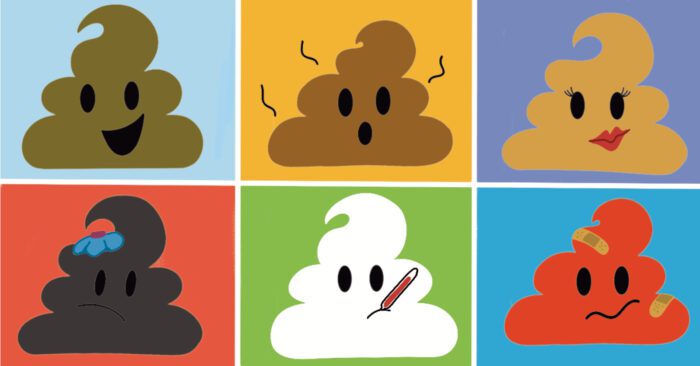WANT EVEN MORE HEALTHY IDEAS FROM SHAPE YOUR FUTURE?
When it comes to “how to talk to your kids about poop”, most kids will disclose the down and dirty details to anyone and anywhere. This can be distressing for many parents, especially when it‘s in public!
Instead of shutting down the conversation, try redirecting it to what really matters: their digestive health. Here’s how to talk to kids about poop in a way that’s easy to digest.
Getting the Potty (Talk) Started
Potty training doesn’t end when kids retire their diapers — and it goes far beyond hand-washing, although that’s also essential. Here are a few things to keep in mind:
| Doo … | Don’t … |
|---|---|
| Laugh! When appropriate, humor can be an effective icebreaker. | Let the jokes dominate the conversation or detract from your main points. |
| Teach your kids about code switching, or tailoring word choice and subject matter to fit each situation and audience. | Use shame. They should feel comfortable speaking up if they notice an issue, but there is a time and place for potty words. |
| Stress how important it is to have a healthy gut and digestive system. | Motivate your kids to pay attention with scare tactics. |
| Use analogies to connect new information to concepts your kids already understand. | Take the analogies so far that they don’t remember the point! |
Dropping Some Knowledge
Whether we like it or not, our bowel movements can reveal more about our gut health than just about anything. Not sure what healthy poop looks like? Keep reading!

Color
Color can tell us a lot. Healthy poop usually shares at least one color with a sunflower or a tree frog: green, brown or yellow!
A stool that’s black, white or red (like a ladybug or fire truck) may signal a problem. Here’s what each color might mean:
- White: A liver issue or a lack of bile
- Black: Internal bleeding
- Red: A cut around their butt or in an intestine
It’s important for kids to observe the color of their poop, but they shouldn’t freak out if they spot a ladybug in the latrine either. Certain medications and foods can trigger a false alarm. For example, iron is known to darken poop, while beets can turn it red!
Frequency
The average kid poops once every 1-2 days — but if your child has been constipated for days on end, don’t rush them to the hospital just yet.
Curious how to get kids to poop? Start here!
- Ensure they get 60+ minutes of daily physical activity.
- Monitor their water intake with this free tracker!
- Feed them fiber. Hint: Fruits, veggies and whole grains are great sources. Have a picky eater? Here are 8 sneaky ways to serve veggies!
Hopefully after addressing those issues, this #2 shall pass — but if your kid’s doo date never comes, it could also be the result of changes in their routine, travel, medications or food allergies like lactose intolerance.
Consistency
It’s normal for the texture to vary from day to day, but healthy poop is generally soft but formed. When a constipated kid finally poops, it often resembles hard pellets. As for the other end of the spectrum, diarrhea is typically runny or squishy. It can be caused by a number of factors, including:
- Bacteria, viruses or parasites
- Medications or food allergies, like celiac disease
- Inflammatory bowel syndrome (IBS)
- Other gastrointestinal (GI) disorders
If your child has the runs on a regular basis, try this advice:
- Hydrate with water or Pedialyte.
- Avoid fruit juices, sports drinks and sodas. Sugary drinks often make (fecal) matters worse!
- Load up on starch, like whole grain crackers, oatmeal, brown rice, pretzels or whole wheat pasta.
Pro tip: In terms of gut health, probiotics are superheroes … so grab some Greek yogurt that’s low in sugar!
If the diarrhea lasts longer than two weeks or contains blood, call their doctor.
The Bottom Line
How to talk to your kids about poop can be awkward, but that doesn’t mean you should let them slip through the cracks. It’s crucial to keep the conversation going so you can address any digestive problems early on!
Want more ways to talk to your kids about healthy living? Right this way!





